Figures & data
Table 2. Stimulus characteristics. Sentences in the Ambiguous condition contained an ambiguous key noun (e.g. “bark”) that was disambiguated towards its subordinate meaning by the final word (e.g. “willow”). Control sentences in the Unambiguous condition contained a frequency-matched and length-matched unambiguous key noun and final word. Means (SD) are reported for psycholinguistic characteristics of the stimuli.
Table 1. Example stimuli in the two coherent conditions (Ambiguous, Unambiguous) and the anomalous filler conditions.
Figure 1. Accuracy rates and response times in the Meaning Coherence Judgement task. Boxplots show median and interquartile range of accuracy scores (top panel) and response times (bottom panel) for the Ambiguous and Unambiguous condition in each presentation format.
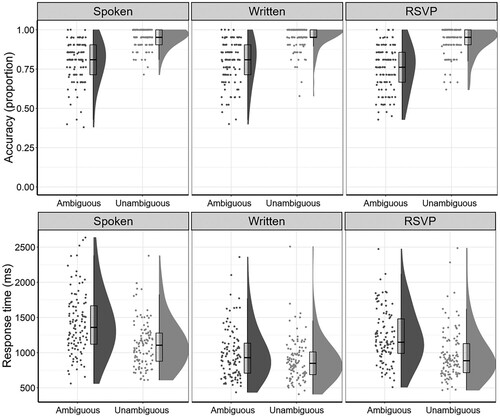
Table 3. Summary of descriptive statistics for accuracy and response times in the Meaning Coherence Judgement task for each of the presentation formats (means with standard deviations in parentheses).
Figure 2. Accuracy rates in the post-scan Recognition Memory test. Boxplots show median and interquartile range of accuracy scores. by scanning run (top panel) and presentation format (bottom panel).
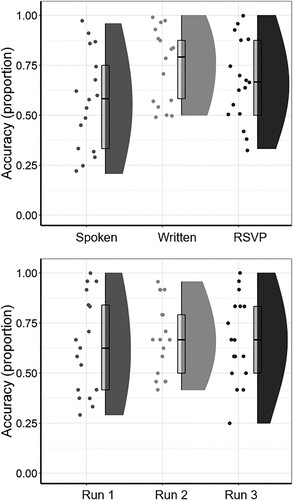
Figure 3. Accuracy rates and response times in the post-scan Explicit Disambiguation task. Boxplots show median and interquartile range of accuracy scores (top panel) and response times (bottom panel) for the Ambiguous and Unambiguous condition.
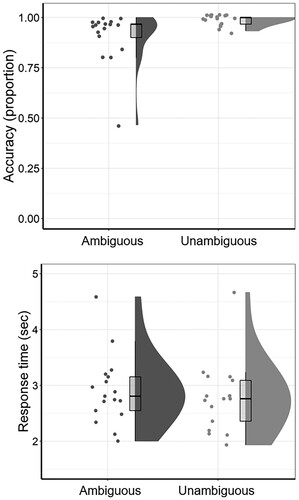
Figure 4. Results of the whole-brain analyses. Brain activation in the contrast of intelligible > unintelligible sentences (panel 1), and ambiguous > unambiguous sentences (panel 2) in each of the presentation formats.
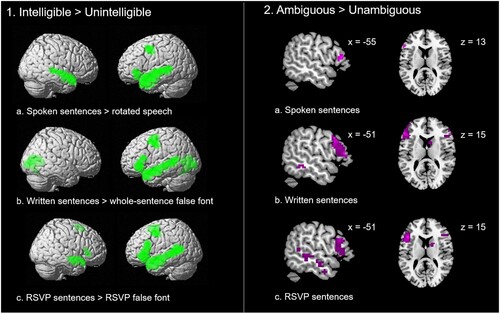
Figure 5. Results of the ROI analyses. Panel 1. Illustration of the approximate location of the BA 45 and BA 47 ROIs in the left IFG (left). Boxplots showing median and interquartile range of ambiguity effects (Ambiguous > Unambiguous contrast) in each of the presentation formats, and ROIs (right). Panel 2. Peri-stimulus time histograms of mean BOLD signal extracted from BA 47 (left) and BA 45 (right).
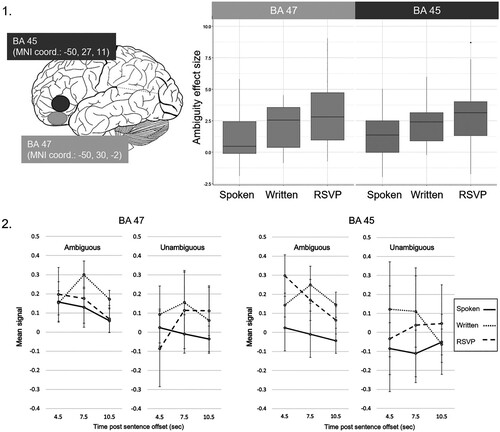
Supplemental Appendix
Download MS Word (89 KB)Data availability statement
The data that support the findings of Experiment 1 and anonymised summary data that support the findings of Experiment 2 are openly available at the Open Science Framework at https://osf.io/m87vg/. The raw data that support the findings of Experiment 2 of this study are available on request from the senior author, JEW. These data are not publicly available due to their containing information that could compromise the privacy of research participants.
